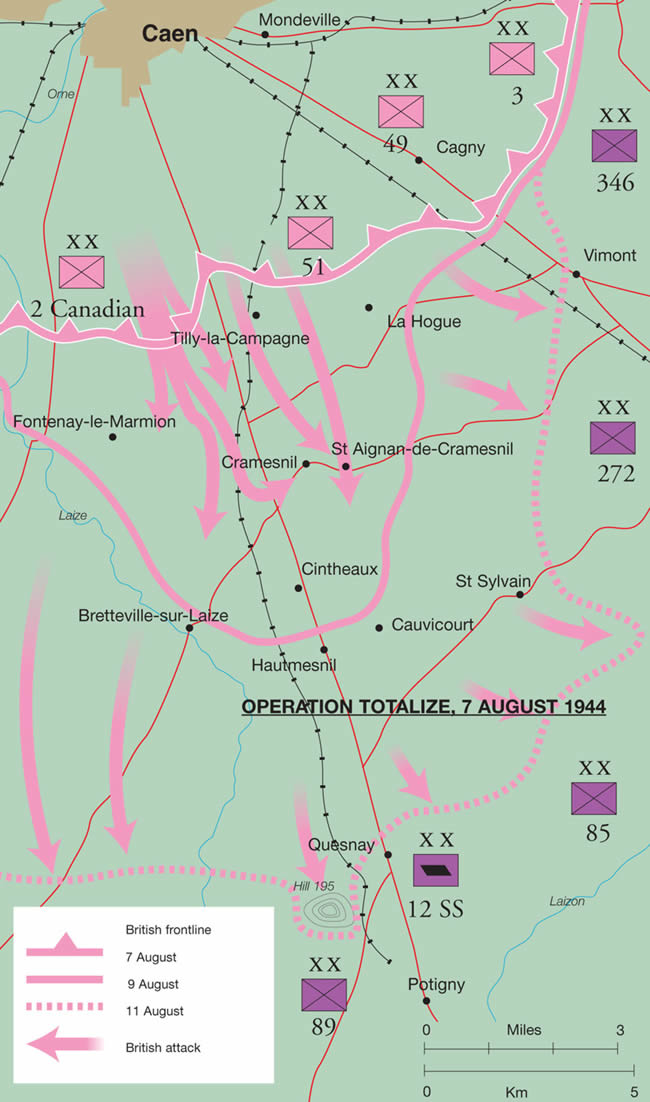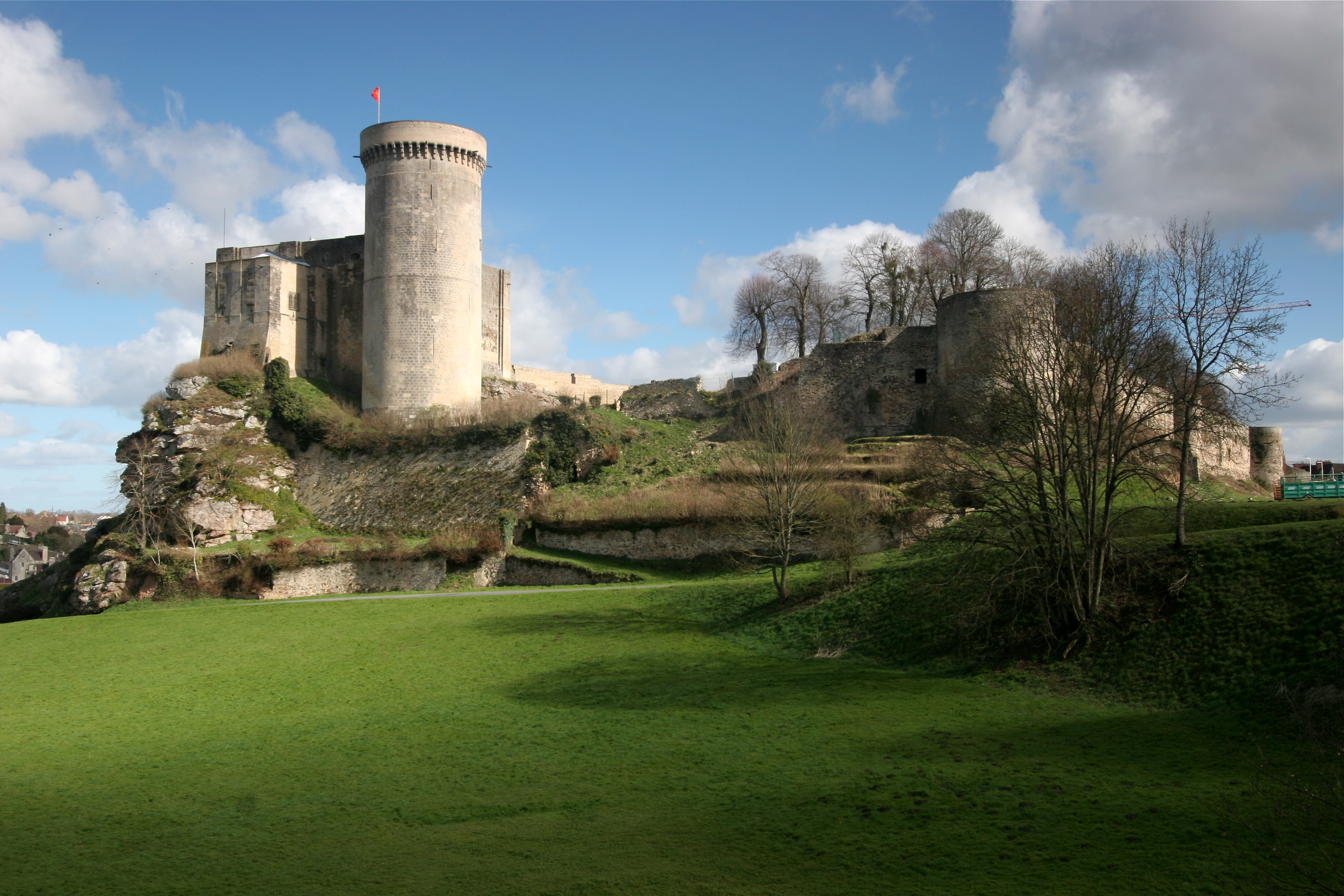|
Cintheaux
Cintheaux () is a commune in the Calvados department in the Normandy region in northwestern France. Geography The commune is located between Caen and Falaise and is the home to the Bretteville-sur-Laize Canadian War Cemetery. Gaumesnil was originally a separate village, now attached to Cintheaux; it has fewer than 19 residents. Sights The main town is situated around the church of Saint-Germain, classified as an official French historic monument. It was built around 1150 by the Marmion family; Robert Marmion offered it in patronage to the Barbery Abbey, subject to the Bayeux diocese, in 1181. The main (north) chapel and the cross tower, dating to the 16th century, was destroyed in 1688. The north bell tower was added in the 18th century. The church was restored between 1857 and 1902. History World War II Cintheaux was devastated by Allied artillery, which sought to annihilate the 12th SS Panzer Division in 1944, during Operation Totalize. Population See also * ... [...More Info...] [...Related Items...] OR: [Wikipedia] [Google] [Baidu] |
Bretteville-sur-Laize Canadian War Cemetery
The Bretteville-sur-Laize Canadian War Cemetery is a war cemetery containing predominantly Canadian soldiers killed during the later stages of the Battle of Normandy in the Second World War. It is located close to the village of Cintheaux and named after Bretteville-sur-Laize in the Calvados department, between Caen and Falaise in lower Normandy. History Bretteville-sur-Laize was created as a permanent resting place for Canadian soldiers who had been temporarily buried in smaller plots close to where they fell. At the time of the cemetery's creation, France granted Canada a perpetual concession to the land occupied by the cemetery. Of the 2,958 burials, 2,782 are Canadian of whom 87 remain unidentified, together with 80 British, four Australian and one each from France and New Zealand. There are records for 2,792 of the Canadian men. A large number of dead in the cemetery were killed late July 1944 around Saint-André-sur-Orne and in the battle for the Falaise Pocket in Augu ... [...More Info...] [...Related Items...] OR: [Wikipedia] [Google] [Baidu] |
Operation Totalize
Operation Totalize (also spelled Operation Totalise in recent British sources) was an offensive launched by Allied troops in the First Canadian Army during the later stages of Operation Overlord, from 8 to 9 August 1944. The intention was to break through the German defences south of Caen on the eastern flank of the Allied positions in Normandy and exploit success by driving south, to capture the high ground north of the city of Falaise. The goal was to collapse the German front and cut off the retreat of German forces fighting the Allied armies further west. The battle is considered the inaugural operation of the First Canadian Army, which had been activated on 23 July. In the early hours of 8 August 1944, II Canadian Corps launched the attack using mechanized infantry. They broke through the German front lines and captured vital positions deep in the German defences. It was intended that two fresh armoured divisions would continue the attack but some hesitancy by these two c ... [...More Info...] [...Related Items...] OR: [Wikipedia] [Google] [Baidu] |
Communes Of The Calvados Department
The following is a list of the 528 communes of the Calvados department Department may refer to: * Departmentalization, division of a larger organization into parts with specific responsibility Government and military *Department (administrative division), a geographical and administrative division within a country, ... of France. The communes cooperate in the following intercommunalities (as of 2020):BANATIC Périmètre des EPCI à fiscalité propre. Accessed 3 July 2020. * Communauté urbaine Caen la Mer * Communaut� ... [...More Info...] [...Related Items...] OR: [Wikipedia] [Google] [Baidu] |
Normandy (administrative Region)
Normandy (; french: Normandie, link=no ; nrf, Normaundie; from Old French , plural of , originally from the word for 'northman' in several Scandinavian languages) is the northwesternmost of the eighteen regions of France, roughly coextensive with the historical Duchy of Normandy. Normandy is divided into five administrative departments: Calvados, Eure, Manche, Orne and Seine-Maritime. It covers , comprising roughly 5% of the territory of metropolitan France. Its population of 3,322,757 accounts for around 5% of the population of France. The inhabitants of Normandy are known as Normans, and the region is the historic homeland of the Norman language. The neighboring regions are Hauts-de-France and Ile-de-France to the east, Centre-Val de Loire to the southeast, Pays de la Loire to the south, and Brittany to the southwest. The capital is Rouen. Normandy's name comes from the settlement of the territory by Vikings (" Northmen") from the 9th century, and confirmed by treaty ... [...More Info...] [...Related Items...] OR: [Wikipedia] [Google] [Baidu] |
Regions Of France
France is divided into eighteen administrative regions (french: régions, singular ), of which thirteen are located in metropolitan France (in Europe), while the other five are overseas regions (not to be confused with the overseas collectivities, which have a semi-autonomous status). All of the thirteen metropolitan administrative regions (including Corsica ) are further subdivided into two to thirteen administrative departments, with the prefect of each region's administrative centre's department also acting as the regional prefect. The overseas regions administratively consist of only one department each and hence also have the status of overseas departments. Most administrative regions also have the status of regional territorial collectivities, which comes with a local government, with departmental and communal collectivities below the region level. The exceptions are Corsica, French Guiana, Mayotte and Martinique, where region and department functions are managed ... [...More Info...] [...Related Items...] OR: [Wikipedia] [Google] [Baidu] |
France
France (), officially the French Republic ( ), is a country primarily located in Western Europe. It also comprises of overseas regions and territories in the Americas and the Atlantic, Pacific and Indian Oceans. Its metropolitan area extends from the Rhine to the Atlantic Ocean and from the Mediterranean Sea to the English Channel and the North Sea; overseas territories include French Guiana in South America, Saint Pierre and Miquelon in the North Atlantic, the French West Indies, and many islands in Oceania and the Indian Ocean. Due to its several coastal territories, France has the largest exclusive economic zone in the world. France borders Belgium, Luxembourg, Germany, Switzerland, Monaco, Italy, Andorra, and Spain in continental Europe, as well as the Netherlands, Suriname, and Brazil in the Americas via its overseas territories in French Guiana and Saint Martin. Its eighteen integral regions (five of which are overseas) span a combined area of ... [...More Info...] [...Related Items...] OR: [Wikipedia] [Google] [Baidu] |
Caen
Caen (, ; nrf, Kaem) is a commune in northwestern France. It is the prefecture of the department of Calvados. The city proper has 105,512 inhabitants (), while its functional urban area has 470,000,Comparateur de territoire INSEE, retrieved 20 June 2022. making Caen the second largest urban area in Normandy and the 19th largest in France. It is also the third largest commune in all of Normandy after Le Havre and . It is located inland from the [...More Info...] [...Related Items...] OR: [Wikipedia] [Google] [Baidu] |
Falaise, Calvados
Falaise () is a Communes of France, commune in the Calvados (department), Calvados Departments of France, department in the Normandy (administrative region), Normandy Regions of France, region in northwestern France. Geography Falaise lies on the river Ante (river), Ante, a tributary of the river Dives (river), Dives, about southeast of Caen. History The area around Falaise has been inhabited from prehistoric times, but it was only at the end of the prehistoric period and the beginning of the Gallo-Roman era that the area, Falaise in particular, was regularly inhabited. Evidence of settlement from the time has been found at Vaston, an agricultural area just north-east of the modern town. Falaise, as it is sited today, probably came into being around the castle. The town was the birthplace of William I of England, William the Conqueror, first of the Normans, Norman Kings of England. He was frequently referred to as William the Bastard, on account of his being born out of wed ... [...More Info...] [...Related Items...] OR: [Wikipedia] [Google] [Baidu] |
Calvados (department)
Calvados (, , ) is a department in the Normandy region in northwestern France. It takes its name from a cluster of rocks off the English Channel coast. In 2019, it had a population of 694,905.Populations légales 2019: 14 Calvados INSEE History Calvados is one of the original 83 departments created during the French Revolution on 4 March 1790, in application of the law of 22 December 1789. It had been part of the former province of Normandy. The name "Orne-Inférieure" was originally pro ...[...More Info...] [...Related Items...] OR: [Wikipedia] [Google] [Baidu] |
Germain Of Paris
Germain ( la, Germanus; 496 – 28 May 576) was the bishop of Paris and is venerated as a saint in both the Catholic Church and the Eastern Orthodox Church. According to an early biography, he was known as Germain d'Autun, rendered in modern times as the "Father of the Poor". Biography Germain was born near Autun in what is now France, under Burgundian control 20 years after the collapse of the Western Roman Empire, to noble Gallo-Roman parents. Germain studied at Avallon in Burgundy and at Luzy under the guidance of his cousin Scallion, who was a priest. At the age of 35, he was ordained by Agrippinus of Autun and became abbot of the nearby Abbey of St. Symphorian. He was known for his hardworking and austere nature; however, it was his generous alms-giving which caused his monks to fear that one day he would give away all the wealth of the abbey, resulting in their rebellion against him. While in Paris in 555, Sibelius, the bishop of Paris, died, and King Childebert had h ... [...More Info...] [...Related Items...] OR: [Wikipedia] [Google] [Baidu] |
Monument Historique
''Monument historique'' () is a designation given to some national heritage sites in France. It may also refer to the state procedure in France by which National Heritage protection is extended to a building, a specific part of a building, a collection of buildings, a garden, a bridge, or other structure, because of their importance to France's architectural and historical cultural heritage. Both public and privately owned structures may be listed in this way, as well as movable objects. As of 2012 there were 44,236 monuments listed. The term "classification" is reserved for designation performed by the French Ministry of Culture (France), Ministry of Culture for a monument of national-level significance. Monuments of lesser significance may be "inscribed" by various regional entities. Buildings may be given the classification (or inscription) for either their exteriors or interiors. A monument's designation could be for a building's décor, its furniture, a single room, or eve ... [...More Info...] [...Related Items...] OR: [Wikipedia] [Google] [Baidu] |
Robert Marmion, 2nd Baron Marmion Of Tamworth
The name Robert is an ancient Germanic given name, from Proto-Germanic "fame" and "bright" (''Hrōþiberhtaz''). Compare Old Dutch ''Robrecht'' and Old High German ''Hrodebert'' (a compound of '' Hruod'' ( non, Hróðr) "fame, glory, honour, praise, renown" and '' berht'' "bright, light, shining"). It is the second most frequently used given name of ancient Germanic origin. It is also in use as a surname. Another commonly used form of the name is Rupert. After becoming widely used in Continental Europe it entered England in its Old French form ''Robert'', where an Old English cognate form (''Hrēodbēorht'', ''Hrodberht'', ''Hrēodbēorð'', ''Hrœdbœrð'', ''Hrœdberð'', ''Hrōðberχtŕ'') had existed before the Norman Conquest. The feminine version is Roberta. The Italian, Portuguese, and Spanish form is Roberto. Robert is also a common name in many Germanic languages, including English, German, Dutch, Norwegian, Swedish, Scots, Danish, and Icelandic. It ... [...More Info...] [...Related Items...] OR: [Wikipedia] [Google] [Baidu] |



